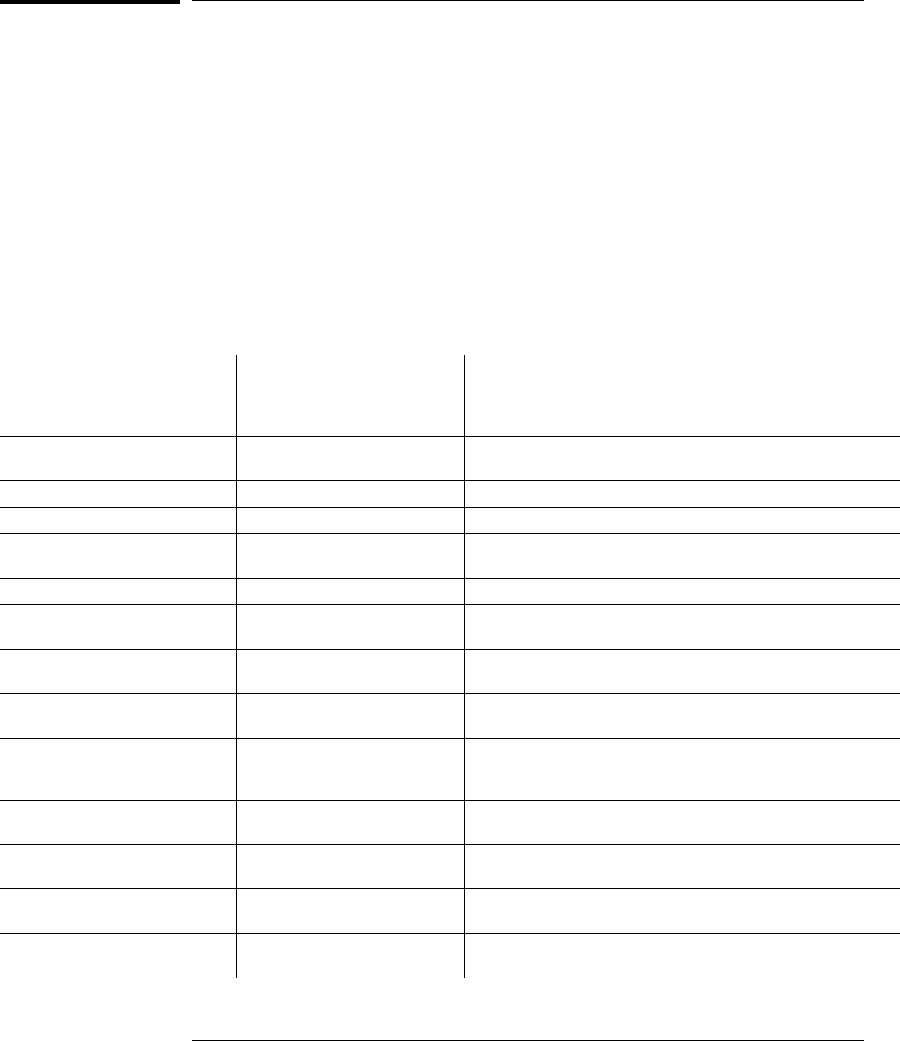Programming instructions
Table Of Contents
- Contents
- Title Page
- Chapter 1 Introduction to Programming
- Chapter 2 Programming Getting Started
- Chapter 3 Programming over HP-IB
- Chapter 4 Programming over RS-232-C
- Chapter 5 Programming and Documentation Conventions
- Chapter 6 Status Reporting
- Figure 6-1. Status Reporting Overview Block Diagram
- Table 6-1. Status Reporting Bit Definition
- Status Reporting Data Structures
- Status Byte Register (SBR)
- Service Request Enable Register (SRER)
- Trigger Event Register (TRG)
- Standard Event Status Register (SESR)
- Standard Event Status Enable Register (SESER)
- User Event Register (UER)
- Local Event Register (LCL)
- Operation Status Register (OPR)
- Limit Test Event Register (LTER)
- Mask Test Event Register (MTER)
- Histogram Event Register (HER)
- Arm Event Register (ARM)
- Error Queue
- Output Queue
- Message Queue
- Key Queue
- Clearing Registers and Queues
- Figure 6-3. Status Reporting Decision Chart
- Chapter 7 Installing and Using the Programmer's Reference
- Chapter 8 Programmer’s Quick Reference
- Warranty
- Index

Commands and Queries
The following tables facilitate easy access to each command and query for
the HP 54645A/D Oscilloscopes. The commands and queries are divided into
separate categories with each entry alphabetized.
The arguments for each command list the minimum argument required. The
part of the command or query listed in uppercase letters refers to the short
form of that command or query. The long form is the combination of the
uppercase and lowercase letters. The NR1 and NR3 formats refer only to the
Query Return values. Input arguments are not restricted by these formats.
These commands also show specific information about how the command
operates on a particular oscilloscope model. For additional information, refer
to the online Oscilloscopes Programmer’s Reference.
Command Query Options and Query Returns
:ACQuire:COMPlete
<complete_argument>
:ACQuire:COMPlete? <complete_argument> ::= 0 to 100; an integer in NR1 format
:ACQuire:COUNt
<count_argument>
:ACQuire:COUNT? <count_argument> ::= 4, 8, 16, 32, 64, 128, or 256; an integer in
NR1 format
:ACQuire:DITHer :ACQuire:DITHer {ON | OFF}
n/a :ACQuire:POINts? 1,000 to 2,000,000; an integer in NR1 format.
:ACQuire:TYPE
<acq_type>
:ACQuire:TYPE? <acq_type> ::= {NORMal | AVERage | PEAK | REALtime}
n/a :AER? 0 | 1;an integer in NR1 format
:ANALog<n>:BWLimit
{ON | OFF}
:ANALog<n>:BWLimit? {ON | OFF}
<n> ::= 1 or 2; an integer in NR1 format
:ANALog<n>:COUPling
{AC | DC | GND}
:ANALog<n>:COUPling? {AC | DC | GND}
<n> ::= 1 or 2; an integer in NR1 format
:ANALog<n>:INVert
{ON | OFF}
:ANALog<n>:INVert? {ON | OFF}
<n> ::= 1 or 2; an integer in NR1 format
:ANALog<n>:LABel
<string>
:ANALog:LABel? <string>::= any series of ASCII characters enclosed in quotation
marks
<n> ::= 1 or 2
:ANALog<n>:OFFSet
<offset_argument>
:ANALog<n>:OFFSet? <offset_argument> ::= offset value in volts in <NR3> format.
<n> ::= 1 or 2; an integer in NR1 format
:ANALog<n>:PMODe
{AUTo | MANual}
:ANALog<n>:PMODe? {AUT | MAN}
<n> ::= 1 or 2; an integer in NR1 format
:ANALog<n>:PROBe
<attenuation>
:ANALog<n>:PROBe? <attenuation> ::= X1, X10, X20, X100 for all oscilloscope models
<n> ::= 1 or 2; an integer in NR1 format
:ANALog<n>:RANGe
<range_argument>
:ANALog<n>:RANGe? <range_argument> ::= Full-scale range value for channels 1 or 2
in NR3 format.
Programmer’s Quick Reference
Commands and Queries
8-4










